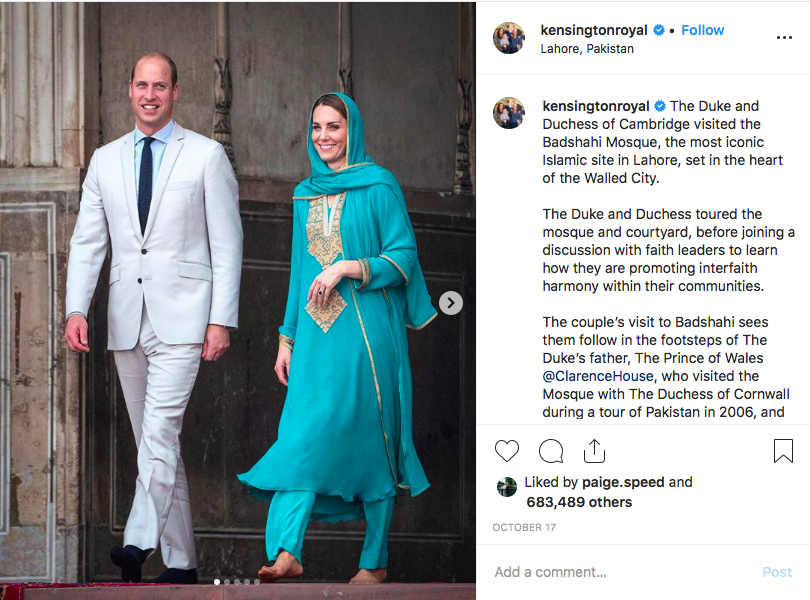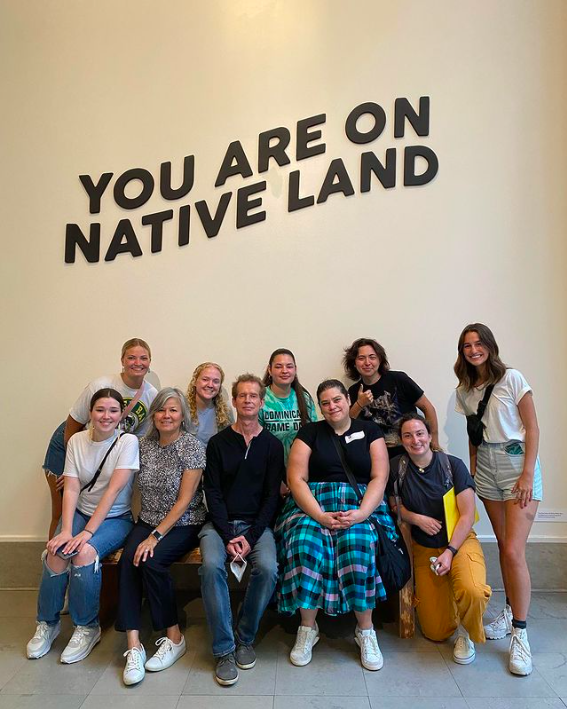During the week of Oct. 18, the Duchess and Duke of Cambridge — Kate Middleton and Prince William — took a Royal Tour of Pakistan. There, they explored the country’s culture and landscapes.
The couple’s communications secretary said how this was the most complex overseas tour the pair had ever completed. The couple’s itinerary aimed to pay respect to the historic relationship between Britain and Pakistan while focusing largely on Pakistan as it is today.
Nobody from the British Crown had visited the country for 13 years, so there was a lot riding on this tour. It was an extravagant event for both the people of Pakistan and the royal family.
Soon after Kate and William arrived in the South Asian country, the headlines and buzz across global media became all about their outfits and fashion choices. Every move was tracked, but more importantly, every piece of clothing they wore was summarized in detail. Every accessory Kate wore gave off a message that the duchess was clearly trying to portray.
The fashion pieces became a symbol of cross-cultural respect, awareness and outreach.
Kate wore traditional clothing produced by famous Pakistani designers like Maheen Khan who are known to have made clothing for infamous Pakistani figures, such as former Pakistani Prime Minister Benazir Bhutto, the first woman to head a democratic government in a Muslim majority nation and other popular brands in the country. Kate also chose outfits that represented Pakistani colors like emerald green and white to represent the unity between the crown and Pakistan.
The question then becomes what about Kate’s outfits and dress were different from those that appropriate South Asian, or any other minority group’s, culture. What is the difference between the duchess’ and duke’s fashion statements and other world leader foreign visits, such as Canadian Prime Minister Justin Trudeau’s flashy choices during his visit to India?
Britain’s historical imperialism is the cause of Pakistan’s tumultuous state. Kate’s fashion was used to try to make the people of Pakistan forget that, but I am choosing to overlook this in order to focus on the broader message behind her outfits.
There is a clear separation between appropriation and appreciation when it comes to clothing, accessories or even hairstyles. When understanding the time and effort Kate’s team took to ensure that her outfits paid homage to Pakistan and its deep-rooted history of fashion, it is a lot easier to appreciate what she was wearing.
Some individuals do not understand that wearing traditional pieces of culture as a way to be “fashionable” or “trendy” can be harmful because they did not take the time to truly research and be informed about what they wear.
When girls wear bindis to music festivals or people go to Halloween parties dressed as Native Americans, they are not trying to do it to send a political message. They are not trying to appreciate the culture or history of the minorities from whom they are stealing fashion pieces.
Kate’s outfits depicted appreciation because they sent a political and cultural message of unity. Everything she wore was purposeful to respect Pakistani tradition and culture. Her outfits were not chosen because they were trendy, aesthetically pleasing or for enjoyment.
When an individual believes there are no consequences to appropriation, such as wearing a sombrero and speaking an incoherent version of what they believe to be Spanglish, it is only further perpetuating the negative and hurtful stereotypes and discrimination minorities face for simply being who they are. One cannot steal a part of someone else’s identity and culture because they want to, but it is especially dangerous when the individuals practicing appropriation — Caucasians — are ones oppressing minority communities.
If a white person was to wear an important item of another culture, they would not receive the same discrimination and harsh treatment that minorities face because of the color of their skin and identity. When someone wears that same piece of clothing because it is their culture, they receive backlash and hate from white people.
White people must use their privilege and status to appreciate other cultures instead of appropriate them, which Kate did during her visit to Pakistan.
People must educate themselves about minority culture and the fashion pieces they put on their bodies. They must learn more about what it means to the history of these people instead of using cultures when it is easy. People cannot forget the past. Instead, they should appreciate it and use clothing as a means of respect, meanwhile raising awareness of the prevalence of minority oppression.









